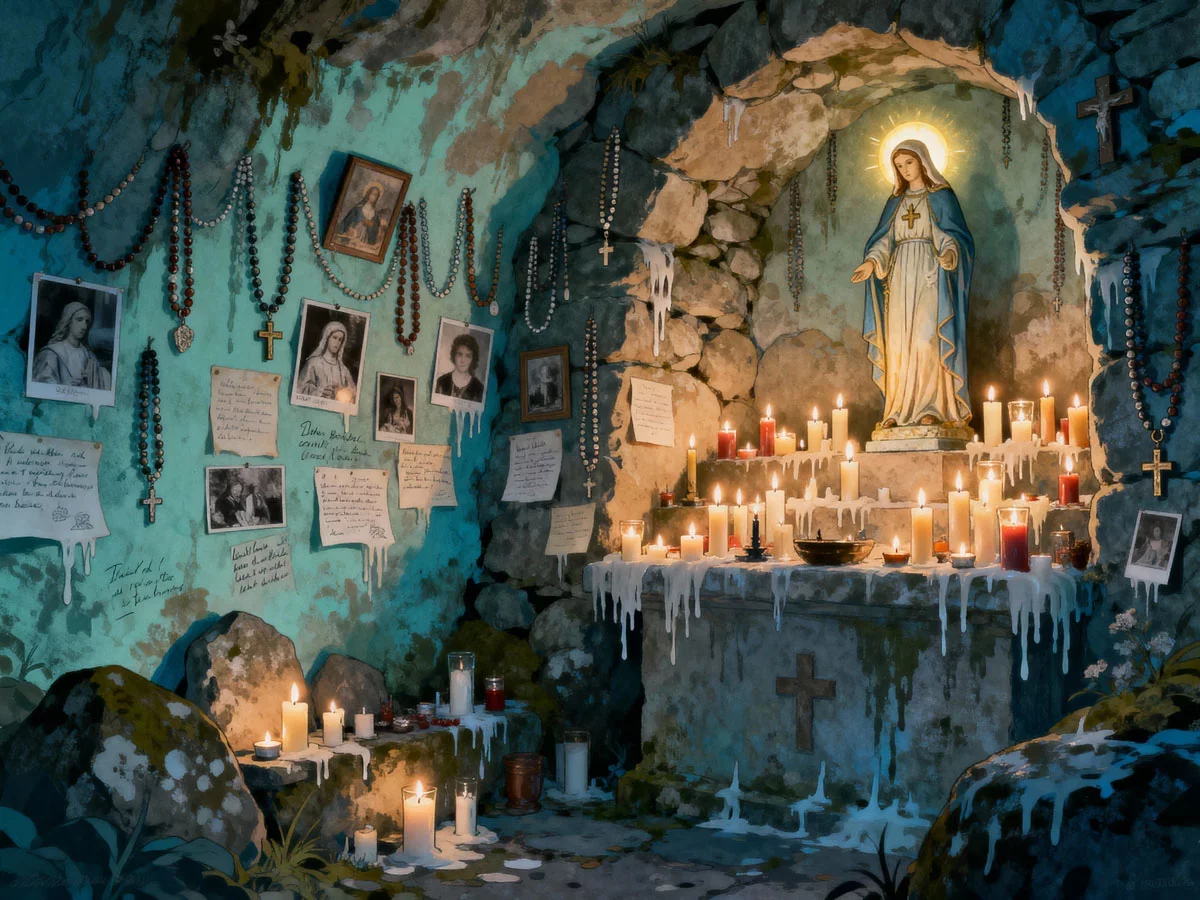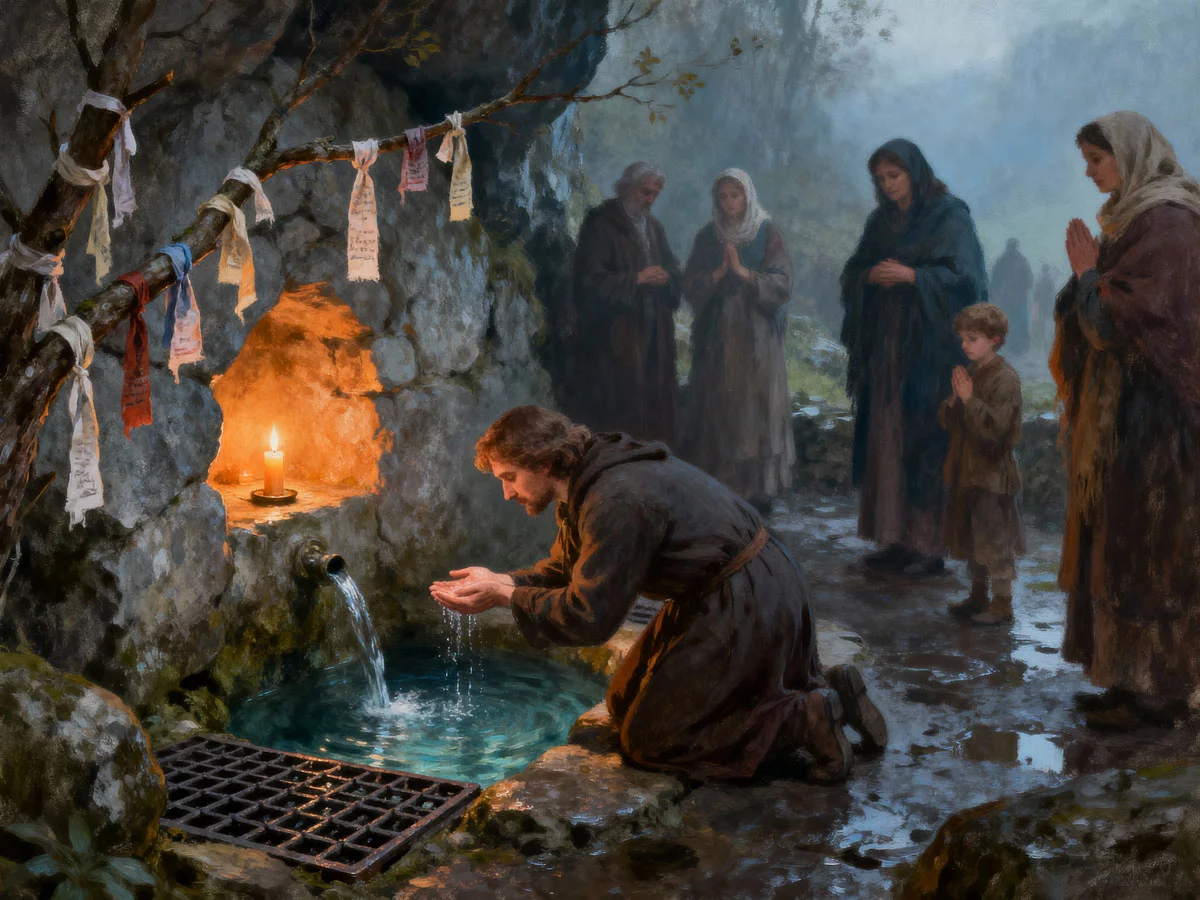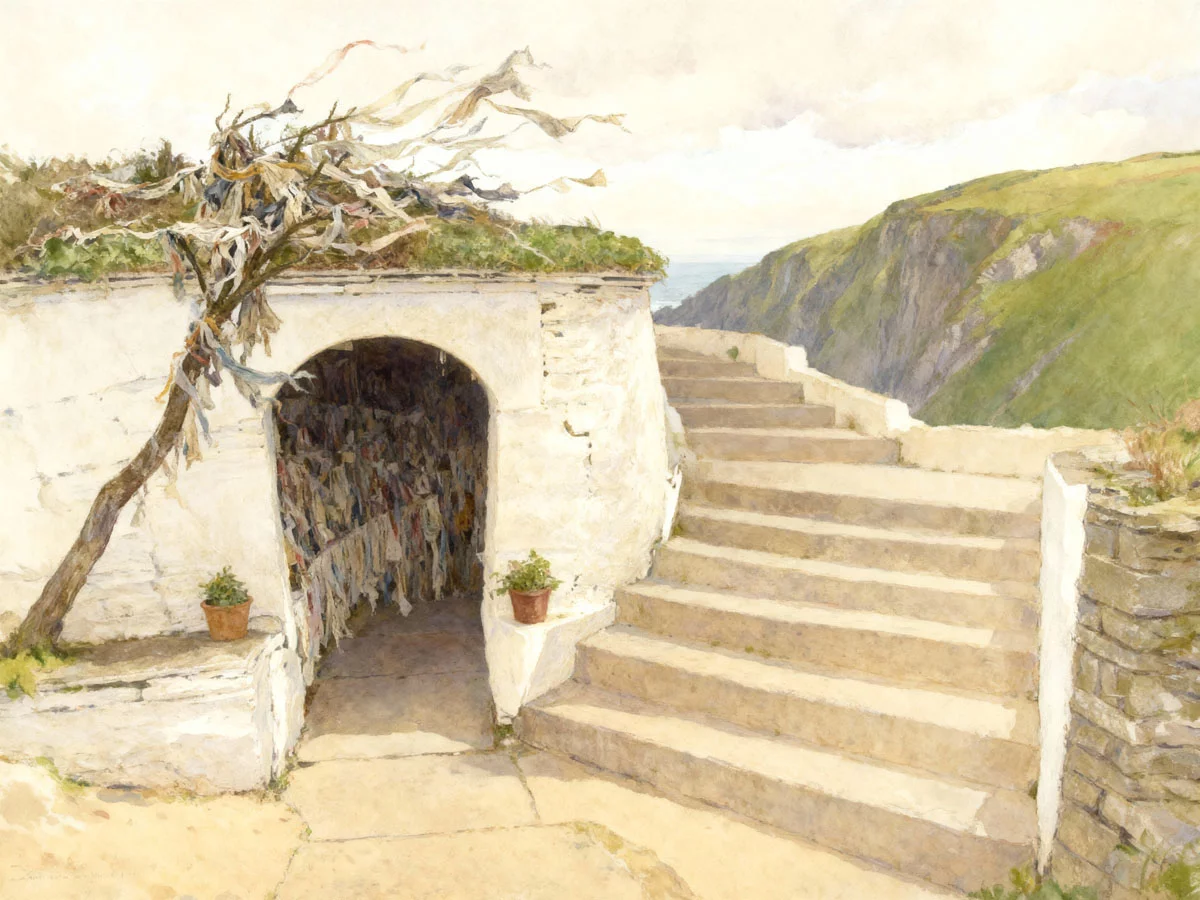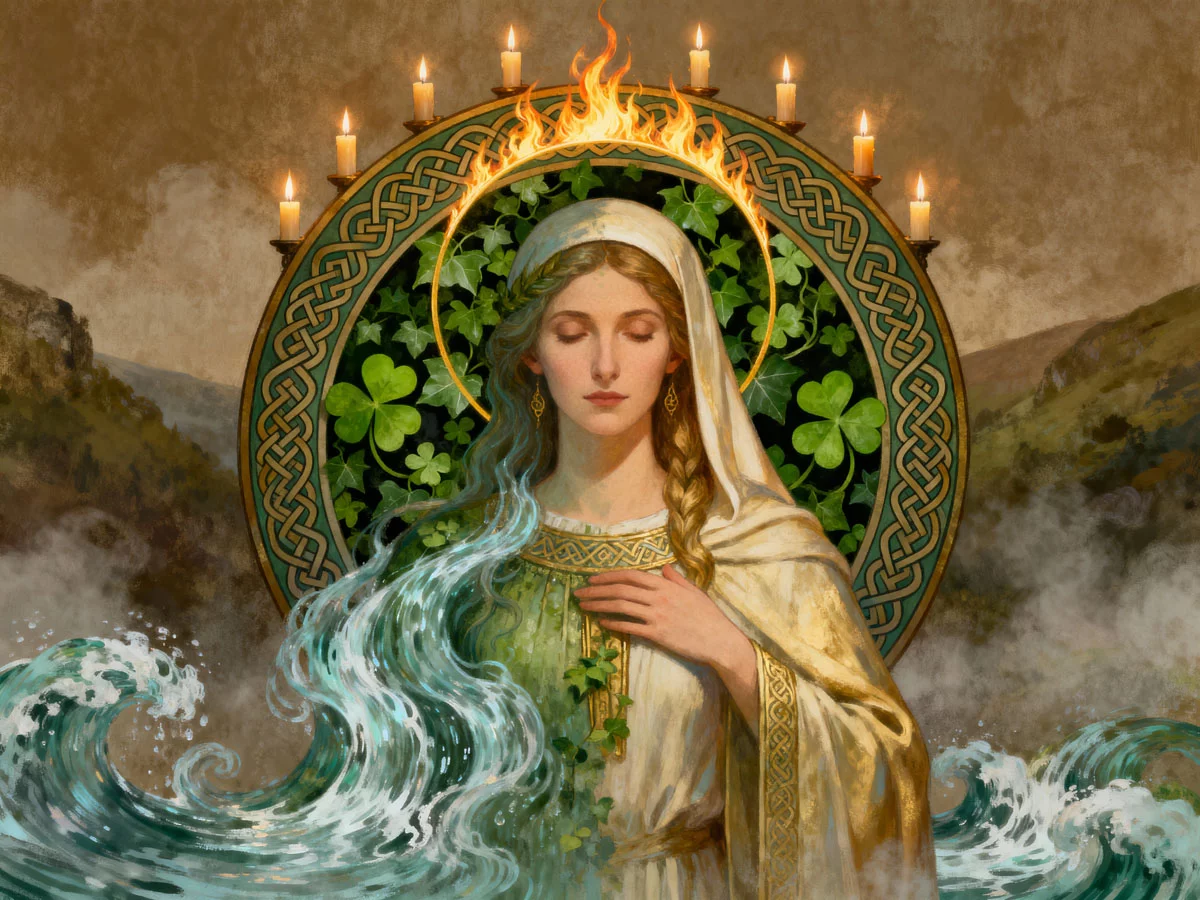Healing Waters of St Brigid’s Well

The Story: A Living Tradition
The story of St. Brigid’s Well isn't a single tale of a monster slain or a battle won. It’s a quiet, continuous story, written and rewritten every day by the hundreds of pilgrims who visit. To understand it, you must first picture the place itself. This is no simple village well. It’s a grotto, a sacred space built into the hillside, feeling less like a church and more like a cave leading to an older, more mysterious world.
As you stoop to enter, the air grows cool and damp, thick with the scent of wet stone, melting wax, and something ancient. The only sounds are the gentle, constant trickle of the spring water and the hushed whispers of prayers. Hundreds of candles flicker in the gloom, casting a soft, dancing light on the statues of St. Brigid and other holy figures. But it’s the walls themselves that tell the story. Every available surface—every grate, ledge, and stone crevice—is covered in a tapestry of human hope and sorrow. You'll see faded photographs of loved ones, rosary beads worn smooth by prayer, holy medals, and thousands of handwritten notes, tucked into the cracks, bearing prayers for healing, for help, for thanks.
The central figure in this story is Saint Brigid of Kildare, one of Ireland's three patron saints. But her roots run deeper than Christianity. She is inextricably linked to the Celtic goddess Brigid, a powerful deity of healing, fertility, poetry, and smithcraft. When Ireland adopted the new faith, the goddess’s mantle fell seamlessly upon the saint, and the ancient reverence for sacred springs was transferred to her. St. Brigid became the gentle but powerful guardian of these life-giving waters.

Pilgrims who visit follow a ritual that has been practiced for centuries. This is the heart of the well's living story. They come seeking a cure for sickness, comfort for grief, or a blessing for their family. The ritual, known as performing "the rounds" or a turas, is a moving meditation:
The Water: First, they approach the spring itself. They cup the cold, clear water in their hands to drink, or to bless themselves. Many bring bottles to carry the healing water home to those who cannot travel.
The Prayers: They then begin "the rounds," circling the well or moving between devotional stations within the grotto, traditionally while reciting the Rosary. The physical act of walking and praying focuses the mind and deepens the spiritual experience.
The Offering: Finally, they leave a piece of themselves behind. This is the most visually powerful part of the tradition. A pilgrim will tie a small strip of cloth, a clootie, to a branch or a grate. This clootie represents their ailment or their prayer. The belief is rooted in ancient sympathetic magic: as the wind and rain cause the rag to slowly rot and disintegrate, so too will the sickness or trouble it represents fade away.
This story reaches its crescendo on February 1st, St. Brigid’s Day—a date that was once the great pagan festival of Imbolc, heralding the first stirrings of spring. On this "Pattern Day," the well’s healing powers are said to be at their absolute peak, and the grotto throngs with believers, continuing a tradition that connects them to countless generations before them.

Analysis: Where a Saint and a Goddess Meet
St. Brigid's Well is one of the most powerful and accessible examples of religious syncretism in Ireland—the blending of different belief systems.
Pagan Foundations: The veneration of the well is not originally a Christian practice. For the ancient Celts, springs and wells were liminal spaces—gateways between this world and the Otherworld. Water that flowed from the earth was seen as a divine gift, possessing the power to heal, grant wisdom, and bless the land. These sites were almost always associated with a guardian goddess, and in this part of the world, that was likely Brigid.
Christian Adaptation: Rather than destroy these deeply held beliefs, the early Christian missionaries in Ireland did something brilliant: they absorbed them. The powerful, nurturing figure of the goddess Brigid was Christianised into the equally powerful and nurturing St. Brigid of Kildare. The sacred well of the goddess became the holy well of the saint. This allowed the ancient rituals, like the leaving of offerings and the association with healing and fertility, to continue within a new, Christian framework.
Sympathetic Magic in a Christian Context: The ritual of the clootie is a direct survival of folk magic. It’s a tangible, physical act that connects a spiritual desire (healing) to a physical outcome (the decay of the rag). Its persistence shows how comfortably these ancient practices can sit alongside formal Christian prayer, fulfilling a deep human need to do something to enact change.
A Living Document: The well is not a relic of the past; it is a living, breathing testament to unbroken faith. Every photograph, every rosary bead, every clootie is a new sentence added to its story. It is a powerful physical archive of generations of human hope, demonstrating that folklore and faith are not just stories to be told, but traditions to be lived.

Related Heritage Sites
More Folklore

Mal and the Hag's Head
A powerful sea-witch named Mal, spurned by the hero Cú Chulainn, fell to her death while chasing him along the Cliffs of Moher; her profile is now said to be frozen forever in the cliff face known as Hag's Head.

The Leap of the Foals (Aill na Searrach)
A group of the Tuatha Dé Danann, the old gods of Ireland, transformed into horses to hide from Christianity in a sea cave. After centuries, seven foals born in the dark emerged, were blinded by the sun, and tragically galloped off the cliff to their deaths.